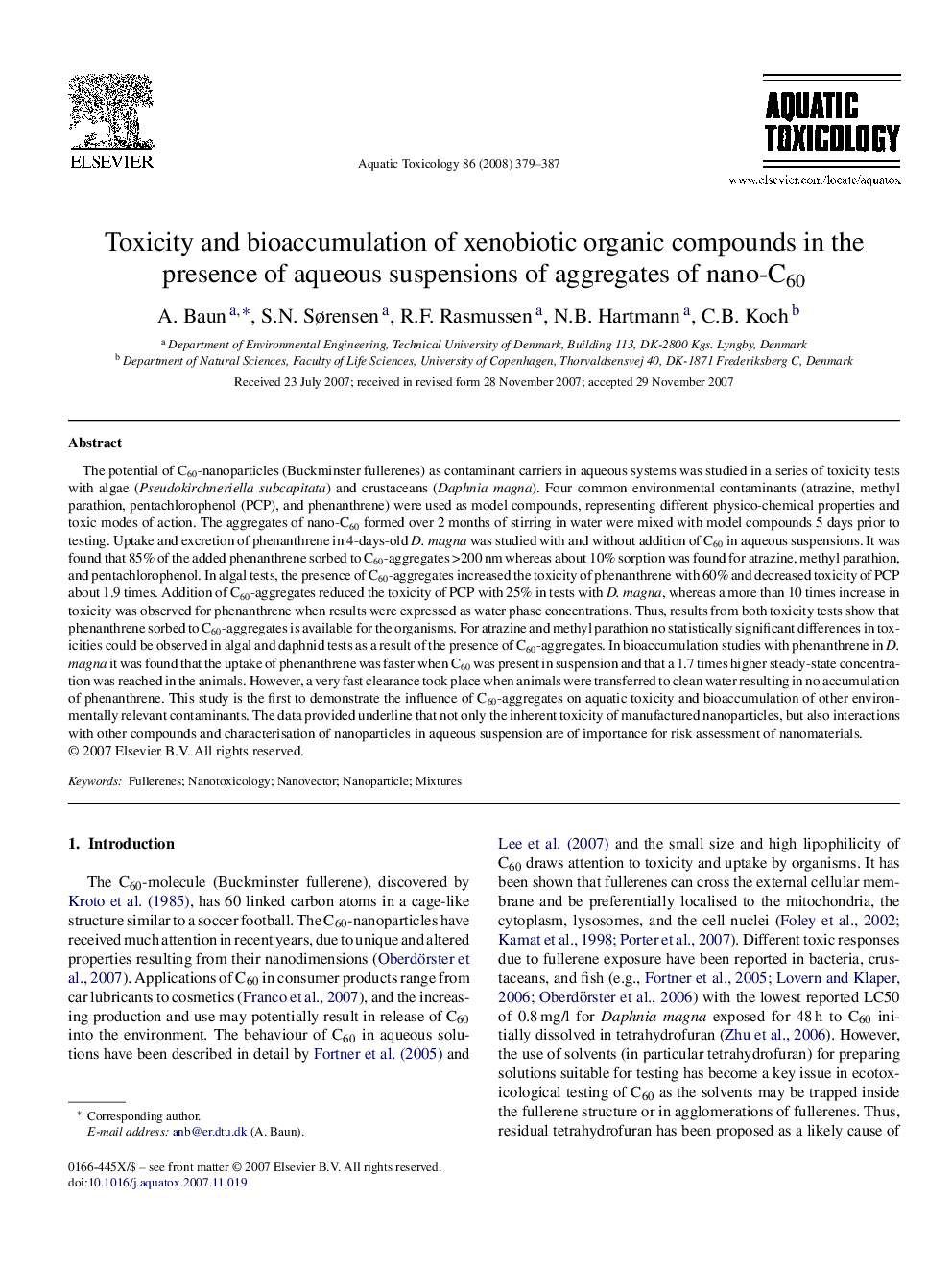| کد مقاله | کد نشریه | سال انتشار | مقاله انگلیسی | نسخه تمام متن |
|---|---|---|---|---|
| 4530876 | 1324736 | 2008 | 9 صفحه PDF | دانلود رایگان |

The potential of C60-nanoparticles (Buckminster fullerenes) as contaminant carriers in aqueous systems was studied in a series of toxicity tests with algae (Pseudokirchneriella subcapitata) and crustaceans (Daphnia magna). Four common environmental contaminants (atrazine, methyl parathion, pentachlorophenol (PCP), and phenanthrene) were used as model compounds, representing different physico-chemical properties and toxic modes of action. The aggregates of nano-C60 formed over 2 months of stirring in water were mixed with model compounds 5 days prior to testing. Uptake and excretion of phenanthrene in 4-days-old D. magna was studied with and without addition of C60 in aqueous suspensions. It was found that 85% of the added phenanthrene sorbed to C60-aggregates >200 nm whereas about 10% sorption was found for atrazine, methyl parathion, and pentachlorophenol. In algal tests, the presence of C60-aggregates increased the toxicity of phenanthrene with 60% and decreased toxicity of PCP about 1.9 times. Addition of C60-aggregates reduced the toxicity of PCP with 25% in tests with D. magna, whereas a more than 10 times increase in toxicity was observed for phenanthrene when results were expressed as water phase concentrations. Thus, results from both toxicity tests show that phenanthrene sorbed to C60-aggregates is available for the organisms. For atrazine and methyl parathion no statistically significant differences in toxicities could be observed in algal and daphnid tests as a result of the presence of C60-aggregates. In bioaccumulation studies with phenanthrene in D. magna it was found that the uptake of phenanthrene was faster when C60 was present in suspension and that a 1.7 times higher steady-state concentration was reached in the animals. However, a very fast clearance took place when animals were transferred to clean water resulting in no accumulation of phenanthrene. This study is the first to demonstrate the influence of C60-aggregates on aquatic toxicity and bioaccumulation of other environmentally relevant contaminants. The data provided underline that not only the inherent toxicity of manufactured nanoparticles, but also interactions with other compounds and characterisation of nanoparticles in aqueous suspension are of importance for risk assessment of nanomaterials.
Journal: Aquatic Toxicology - Volume 86, Issue 3, 18 February 2008, Pages 379–387